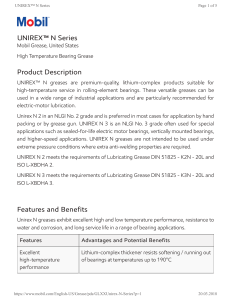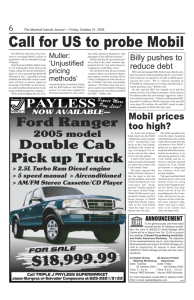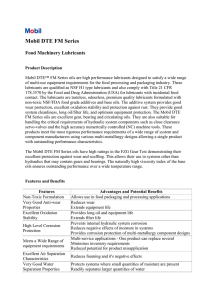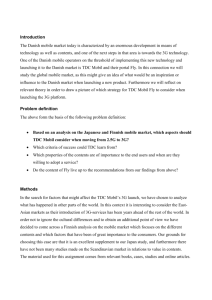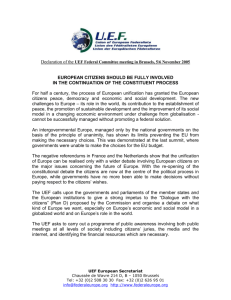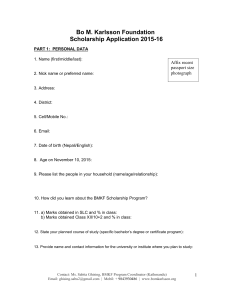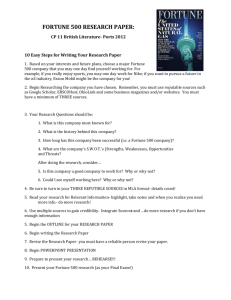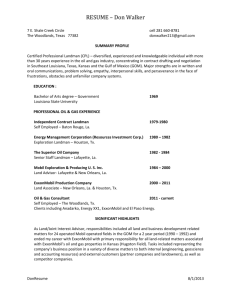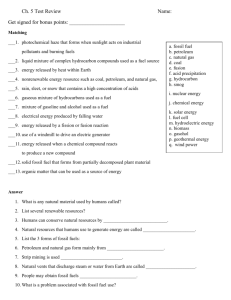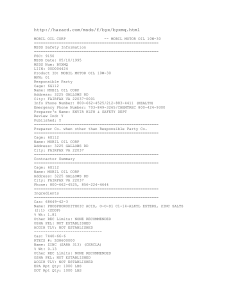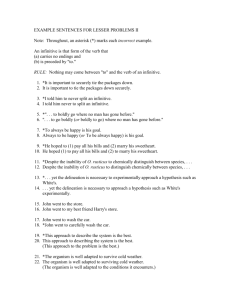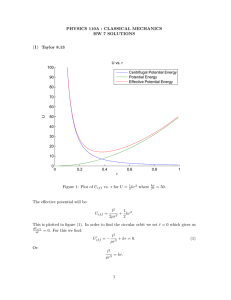Mobil Oil NZ
advertisement
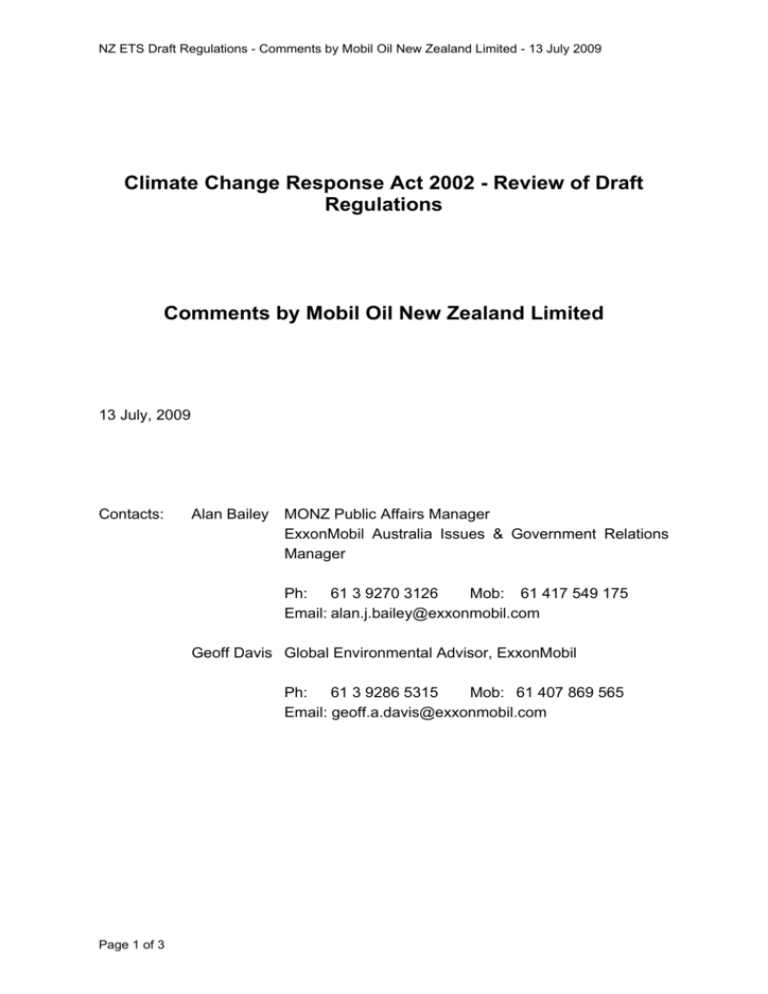
NZ ETS Draft Regulations - Comments by Mobil Oil New Zealand Limited - 13 July 2009 Climate Change Response Act 2002 - Review of Draft Regulations Comments by Mobil Oil New Zealand Limited 13 July, 2009 Contacts: Alan Bailey MONZ Public Affairs Manager ExxonMobil Australia Issues & Government Relations Manager Ph: 61 3 9270 3126 Mob: 61 417 549 175 Email: alan.j.bailey@exxonmobil.com Geoff Davis Global Environmental Advisor, ExxonMobil Ph: 61 3 9286 5315 Mob: 61 407 869 565 Email: geoff.a.davis@exxonmobil.com Page 1 of 3 NZ ETS Draft Regulations - Comments by Mobil Oil New Zealand Limited - 13 July 2009 Mobil Oil New Zealand Limited (Mobil) welcomes the opportunity to review and provide comments on the following draft regulations which have been issued for public consultation: Climate Change (Stationary Energy and Industrial Processes) Regulations 2009 Climate Change (Unique Emissions Factors) Regulations 2009 Climate Change (Other Removal Activities) Regulations 2009 Climate Change (Liquid Fossil Fuels) Regulations 2009 In general the draft regulations appear thorough and comprehensive. The scope of the Other Removal Activities Regulations is not applicable to Mobil's operations hence we have not reviewed and make no comment on those. In principle, Mobil supports the concept of allowing for Unique Emissions Factors and we are generally comfortable with the provisions of the draft regulations which relate to these. We agree with the proposed threshold of 2% lower than the default emission factor (DEF) before the Government will consider issuing a separate UEF. We also agree that covered persons/entities applying for a UEF should not be charged a fee for this, although clearly they will need to bear the costs of sampling, testing and verification required to support such an application. We have the following specific comments on the UEF Regulations: Mobil believes that the UEF Regulations (and also the Liquid Fossil Fuels Regulations) should indicate at what frequency (e.g. annually, or other) DEFs and UEFs need to be reviewed. We consider that annual review is appropriate. We consider that the ability to apply for a UEF for any fuels should be subject to the same 2% threshold versus the DEF, i.e. the threshold should not be reduced to 1% for Any Other Fuel, which in any case already has the highest possible DEF so it should be readily possible to satisfy the 2% threshold for any specific fuel. With respect to Part 2, subregulation 8, Procedures/Test Methods, Mobil suggests that in defining acceptable test methods the regulations should avoid locking on to specific year marks and should acknowledge the acceptability of later revisions, e.g. "ASTM D1298-99(R05) or most recent published version of the method" so that advances in technology and/or revisions in limits of detection or reproducibility/repeatability of results for particular test methods can be readily incorporated. In subregulation 8(a), we do not understand how ISO4259 is to be applied to the determination of testing frequency and sampling practice. Need to clarify which paragraphs of this method are applicable. In subregulation 8(b)(i), we are unfamiliar locally with the use of ASTM D529105(R07) (current version) and aren't able to offer detailed technical comment on its suitability for use in determination of carbon content for the purposes of the regulations. However, it should be noted that the scope of ASTM D5291 identifies some limitations in the use of that method, viz: "… test methods are applicable to samples such as crude oils, fuel oils, additives, and residues for carbon and hydrogen and nitrogen analysis" and further that the " … test methods are not recommended for the analysis of volatile materials such as gasoline, gasolineoxygenate blends, or gasoline type aviation turbine fuels." As the interpretation of "obligation fuel" under the draft UEF amendment regulations is "the same meaning as in regulation 3 of the Climate Change (Liquid Fossil Fuels) Regulations 2008", which covers Motor Spirit (gasoline) and Aviation Spirit, it would appear inappropriate to use ASTM D5291 for the determination of carbon content in these fuel types. Page 2 of 3 NZ ETS Draft Regulations - Comments by Mobil Oil New Zealand Limited - 13 July 2009 For determining density, relative density, API gravity the regulations allow the use of ASTM D1298-99 (R05) or ISO/IEC 3675:1998 (current versions of these test methods); Mobil would suggest inclusion of ASTM D4052-96 (R02 e02) method for density and relative density of liquids by digital density meter - IP designation: 365/84(86) - and/or ISO/IEC 12185:2006, determination of density via oscillating U-tube method for crude petroleum and petroleum products, 1st Edition; Technical Corrigendum 1:8-15-2001. Current versions of other methods cited in this subregulation are ISO/IEC 4259:2006 and ISO/IEC 17025:2005/Cor 1:2006. While the Stationary Energy and Industrial Processes Regulations are not directly applicable to Mobil's operations we do have the following comments on these regulations: We note that Petroleum Refining is included in the regulations although we understand that NZRC is currently exempt by virtue of its separate greenhouse gas reduction agreement. We also note that the definition of "Participant" in section 54 of the Climate Change response Act 2002 (the Act) is ambiguous about who is actually involved in the activity of refining petroleum. Clearly, in the NZ context, that should be NZRC rather than the owners of the petroleum processed by/held within the refinery, but it is desirable that this be clarified, if not in the Act itself then through these amending regulations. The emission factor indicated for refinery fuel gas (Table 7 of Sch 2 - page 53) doesn't make sense - at 5.53 ktCO2e/t it is more than 50% higher than if the fuel was 100% carbon. Please contact those listed on the front of this document for clarification of any of the points raised above. Page 3 of 3
